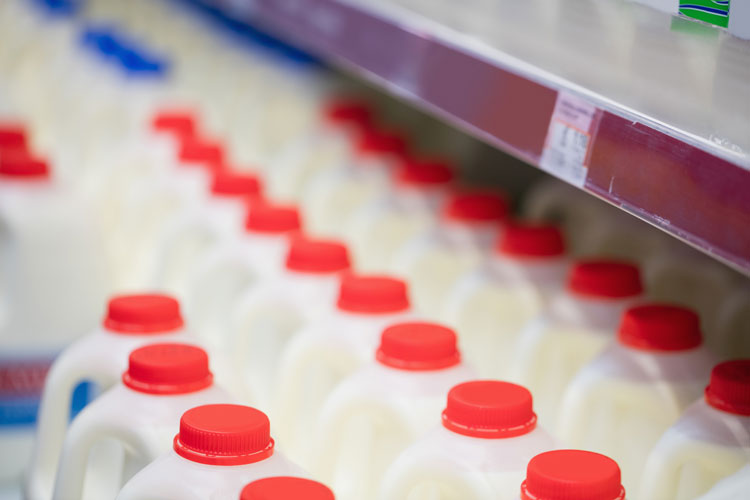
Price data from the Bureau of Labor Statistics reveals that the U.S. retail average price for a gallon of whole milk was below $3 for every month of 2018. Whole milk prices ranged from a monthly high of $2.96 per gallon in January to the monthly low of $2.84 in July, with the most recent price in December near the annual low at $2.85.
To remain below $3 per gallon for every month of the year is particularly noteworthy given the fact that there have been only four other months since May 2004 with prices below the $3 threshold, with three of those months coming during the depths of the economic recession in the summer of 2009.
It’s true that food price inflation has been modest by historical standards since 2014. For example, the consumer price index for all food for home consumption averaged only 0.1 percent higher last year when compared to 2014. Even so, fluid milk prices stand out due to their weakness.
The following lists the retail price change for the fourth quarter of 2018 relative to the average of 2010 to 2014 for a number of staple food products:
• Ground beef up 21 percent
• Sliced bacon up 11 percent
• White rice down 3 percent
• Spaghetti and macaroni down 7 percent
• Boneless chicken breast down 8 percent
• White bread down 9 percent
• White sugar down 9 percent
• Eggs down 12 percent
• Whole milk down 18 percent
Thankfully for the dairy industry, cheddar cheese (-2 percent) and ice cream (-1 percent) retail prices have not suffered to the same extent as retail fluid milk prices. However, retail dairy prices have not seen the price growth associated with the strong demand picture found with many beef cuts and bacon.
While it is true that sales data from USDA’s Agricultural Marketing Service lists whole milk as one of the few fluid products with higher volume in 2018 than the previous year, that modest quantity increase paired with observed price weakness is yet another sign of the struggle facing fluid milk demand. As a point of reference, January to November 2018 sales for whole milk were up 1.7 percent compared to -2.9 percent for reduced fat milk, -9.7 percent for fat free milk and -2.0 percent for total fluid milk products.
As we continue to look for outcomes that would lead us to better milk prices and margins in 2019, managing reductions in consumer demand for fluid milk remains important to dairy producer profitability.








